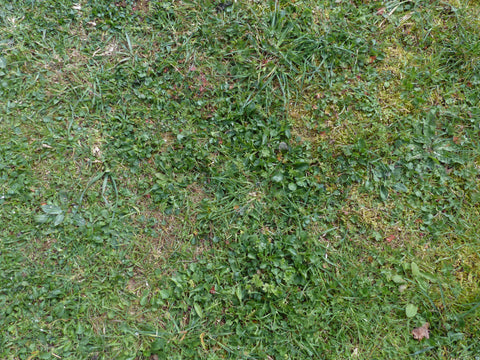Sowing Wildflower Seed Onto Grass
We're often asked "Can I sow wildflower seed onto grass?" Generally customers have an existing lawn or pasture which they want to enhance. The short answer is it may well not work.
You'll more often than not have a better chance of establishing a wildflower meadow area if you start from scratch. On the other hand sometimes - if the lawn has been converted from old pasture, for example - people are amazed by the wildflowers which appear if they just leave it unmown over the summer.
It's not ALWAYS impossible to successfully oversow if you take that route, but that depends on several things.
Soil Fertility
If you have fertile soil, over time grasses or - if not managed - pernicious weeds - will overwhelm the wildflowers you are trying to establish. Even if you start with bare earth it's a problem, so if the grass is already there it's doubly difficult. It's not that wildflowers don't like fertile soils; they just don't respond to higher nutrient levels in the same way that grass or plants like dock or nettle will do.
If you're not sure how fertile your soil is - or whether it's alkaline or acidic - you can do a simple soil test using a kit from your local garden centre.
Existing Grass
Grass is so successful because it grows fast and has a tendency to thatch, blocking out any competition. Some grasses are particularly thuggish. Particular favourites of lawn mixes are cultivars of Lolium perenne, Perennial rye grass.
If you're looking at a sea of these kind of spikelets in summer, then forget converting your lawn to a wildflower meadow! No amount of careful preparation or parasitic plants (see below) is going to work, I'm afraid. You may have some initial success, but within a couple of years you'll be looking at a lot of ryegrass again. There are other aggressive coarser grasses too, but PRG is the main offender as cultivars are always an important constituent of lawn or grazing mixes.
On the other hand, when you have a careful look at your grass you may be pleasantly surprised. People often find that they have a range of wildflowers they haven't noticed, or which just haven't had a chance to get going. Following the advice below will help them do so.
Preparation
So, you have a promising site with what looks like fine grasses. What do you do to prepare it for overseeding with a wildflower seed mix?
You need to really beat up the existing grass, to the extent that you can see up to 50% earth. You need to do this through a combination of scarifying and cutting. To break up the thatch of the existing grass, first cut it. Then use a chain harrow to larger sites, or for a garden a scarifier, spring rake or hand cultivator. Once you've done that, cut it again - really short. If you're lucky enough to have livestock, do the cutting with them!
You're trying to create gaps large enough for the slow germinating and growing wildflowers to establish before they're overwhelmed by faster growing grass. You may even feel you need to clear small patches completely to give them as good a chance as possible.
Seed
If you then decide to add some wildflower seed, source it from a reputable supplier and always check that not only does it include appropriate native species, but that the seed originates in the UK. "Wildflowers" can apparently mean different things to different suppliers! They need to be recently harvested and stored properly too. Although a wildflower only seed mix will cost a lot more than a meadow mix (i.e. including grasses) you won't need much of it; reckon on something around 1g per square metre.
If you're sowing in late summer - autumn (the optimal time), then it's helpful if your mix includes Yellow Rattle, Rhinanthus minor. If it doesn't, then it's probably worth buying a little to add. If sowing in spring, add it the following September ayway as the seed has limited viability.
You could at this point - particularly if you have a small area - decide it's all too much and pop some plug plants in instead. They're more expensive and you'll get less diversity, but they're definitely an option. Reckon on 5 per square metre, so a single one of these trays will cover 25 square metres.
Seeding
...is simple. The seeding rate is so low - reckon on around 1g per square metre - that you'll need to mix your seed mix with some peat free compost or sand to make sure you don't run out of expensive ammunition half way through sowing. The ratio of inert carrier to seed doesn't matter.
If you're seeding a large area, mark it out into squares with canes. If you have a square 5mX5m you know you will need around 25g of seed for that area.
Scatter evenly across the area you want to seed. Do two passes if you can, one left to right and the other front to back.
Once seeded, if its practical, give the area a light role to make sure the seed is in good contact with the earth.
Initial Management
If you can bear it, keep the newly seeded area cut for 6 months after seeding, to around 3cm. This will help keep the grass from overwhelming the seedling wildflowers. The exception to this is if your wildflower seed included cornfield annuals like poppies, in which case let them flower before cutting.
This regime will also help control weeds, but if you see plants like dock appearing then have them out!
Success!


